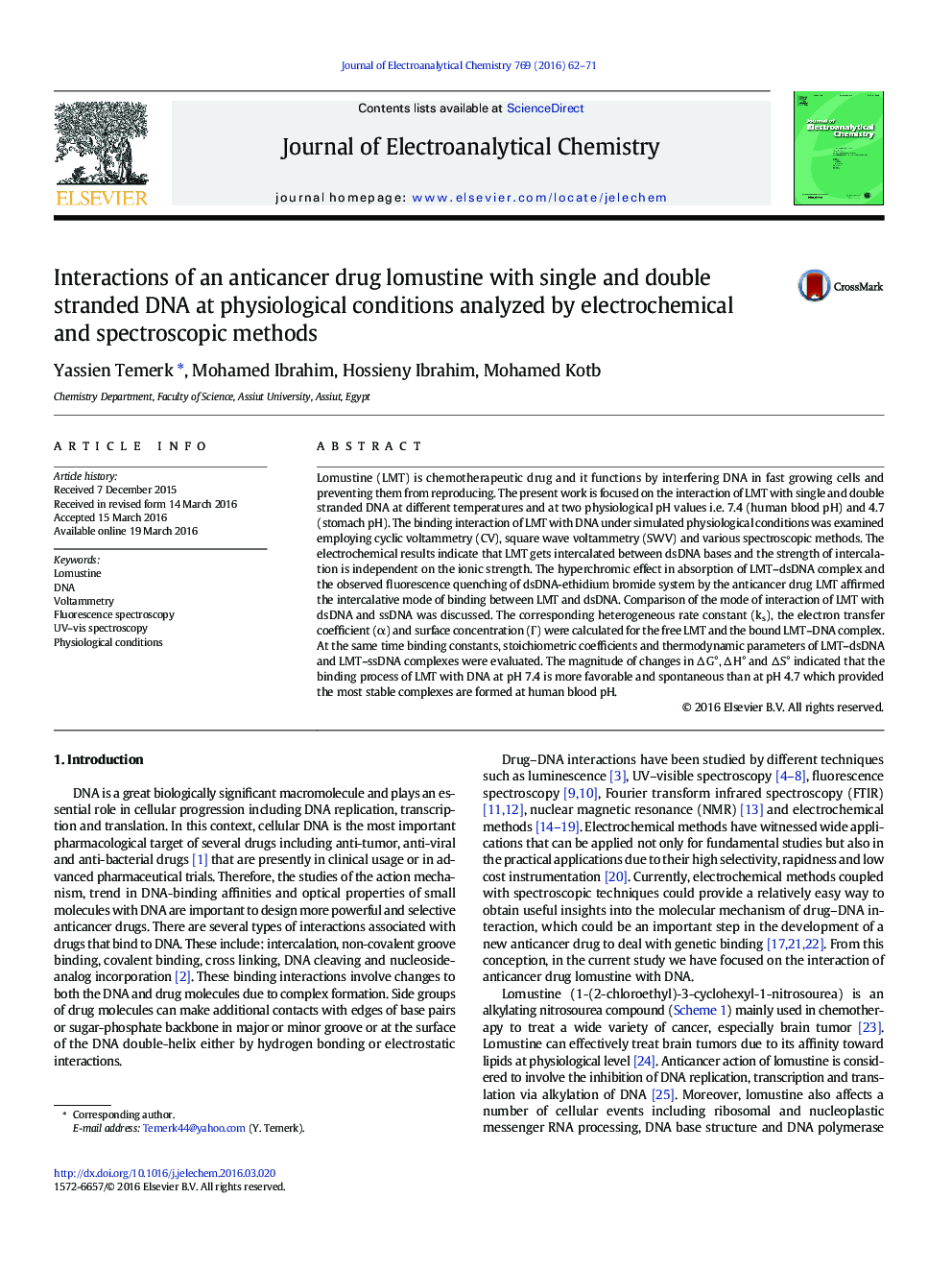| کد مقاله | کد نشریه | سال انتشار | مقاله انگلیسی | نسخه تمام متن |
|---|---|---|---|---|
| 217948 | 463175 | 2016 | 10 صفحه PDF | دانلود رایگان |

• Interactions of lomustine (LMT) with ss-DNA and dsDNA were investigated by using electrochemical and spectroscopic methods.
• Electrochemical kinetic parameters of LMT reduction were calculated in the absence and presence of DNA.
• LMT gets intercalated between dsDNA bases at blood pH as well as stomach pH.
• Thermodynamic parameters of LMT–dsDNA and LMT–ssDNA were calculated.
• Analytical aspects of LMT–dsDNA and LMT–ssDNA interactions at physiological conditions were studied.
Lomustine (LMT) is chemotherapeutic drug and it functions by interfering DNA in fast growing cells and preventing them from reproducing. The present work is focused on the interaction of LMT with single and double stranded DNA at different temperatures and at two physiological pH values i.e. 7.4 (human blood pH) and 4.7 (stomach pH). The binding interaction of LMT with DNA under simulated physiological conditions was examined employing cyclic voltammetry (CV), square wave voltammetry (SWV) and various spectroscopic methods. The electrochemical results indicate that LMT gets intercalated between dsDNA bases and the strength of intercalation is independent on the ionic strength. The hyperchromic effect in absorption of LMT–dsDNA complex and the observed fluorescence quenching of dsDNA-ethidium bromide system by the anticancer drug LMT affirmed the intercalative mode of binding between LMT and dsDNA. Comparison of the mode of interaction of LMT with dsDNA and ssDNA was discussed. The corresponding heterogeneous rate constant (ks), the electron transfer coefficient (α) and surface concentration (Γ) were calculated for the free LMT and the bound LMT–DNA complex. At the same time binding constants, stoichiometric coefficients and thermodynamic parameters of LMT–dsDNA and LMT–ssDNA complexes were evaluated. The magnitude of changes in ∆ G°, ∆ H° and ∆ S° indicated that the binding process of LMT with DNA at pH 7.4 is more favorable and spontaneous than at pH 4.7 which provided the most stable complexes are formed at human blood pH.
Figure optionsDownload as PowerPoint slide
Journal: Journal of Electroanalytical Chemistry - Volume 769, 15 May 2016, Pages 62–71